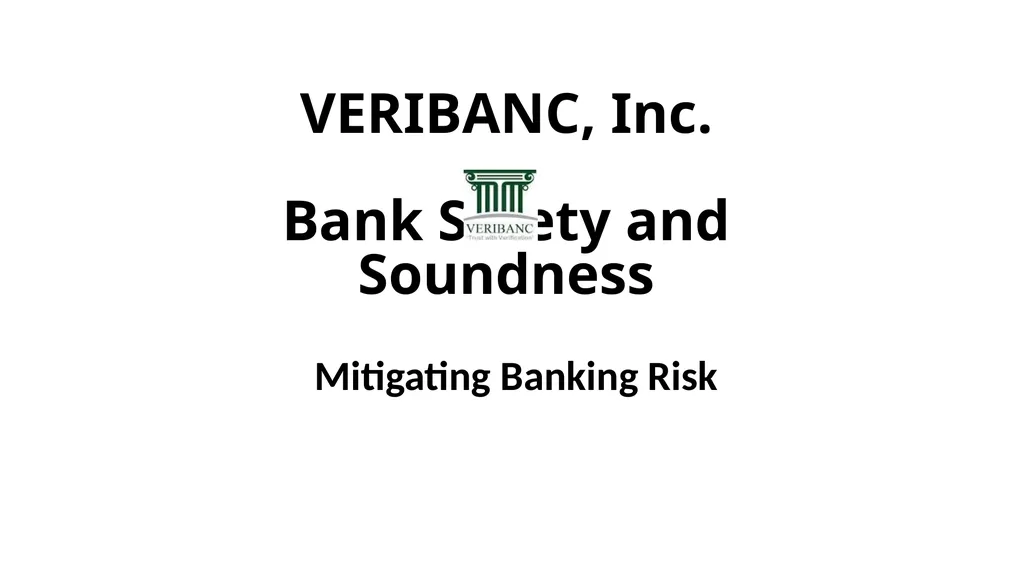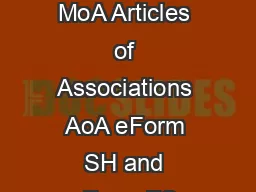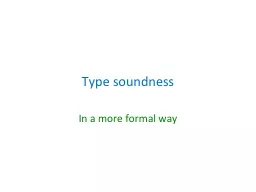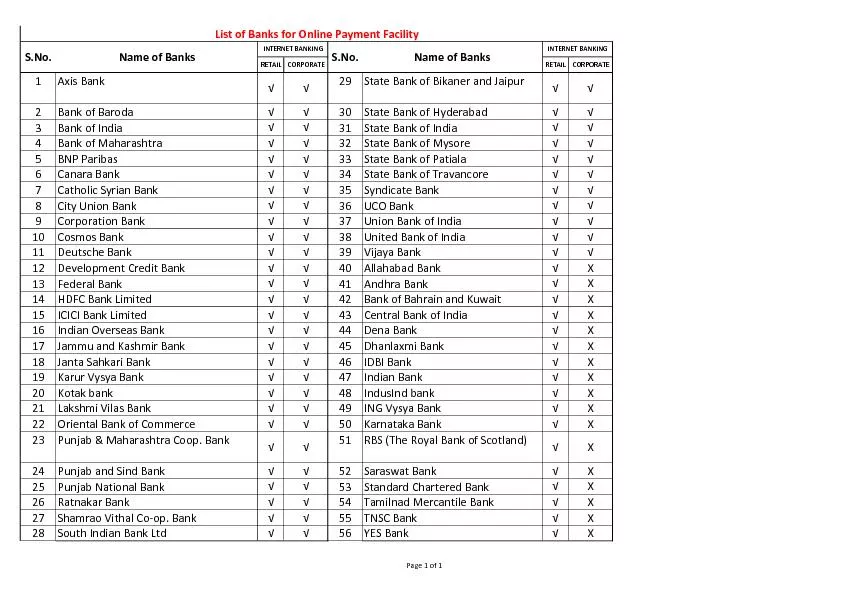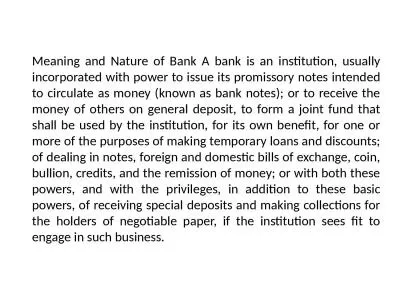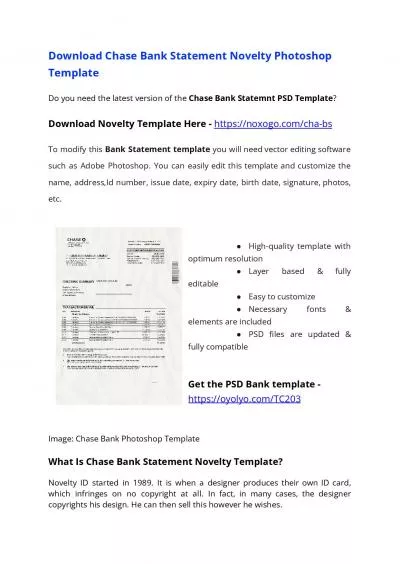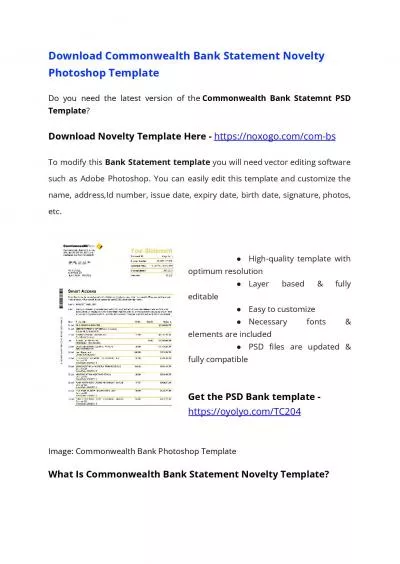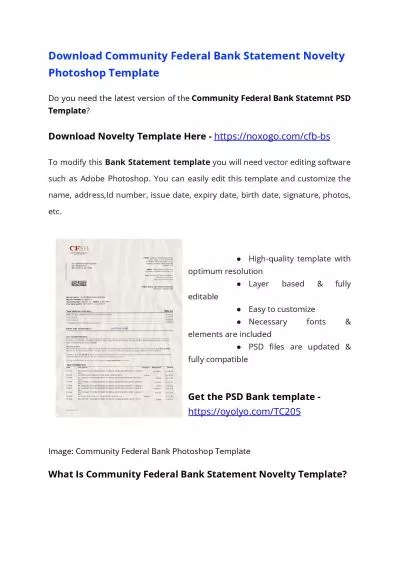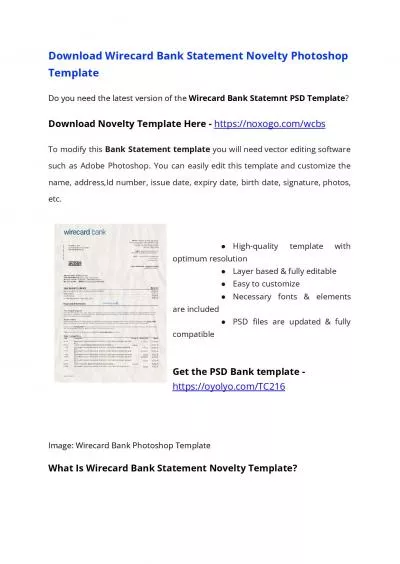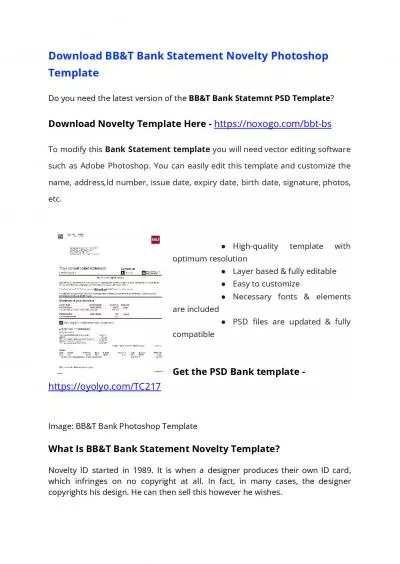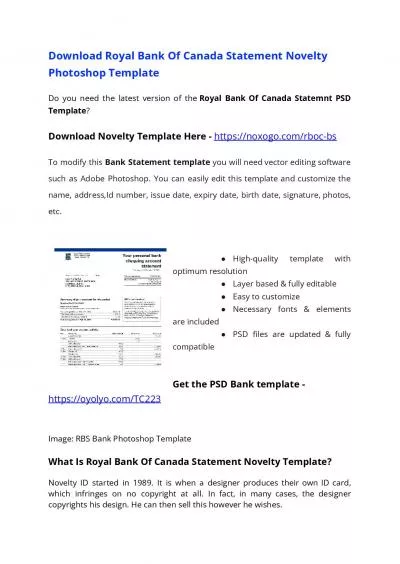VERIBANC, Inc. Bank Safety and Soundness
Author : karlyn-bohler | Published Date : 2025-06-23
Description: VERIBANC Inc Bank Safety and Soundness Mitigating Banking Risk MASSACHUSETTS COLLECTORS TREASURERS ASSOCIATION PARTNERED WITH VERIBANC BACK IN 1993 RATINGSTIERS BLUE RIBBON BB FAILURES DEMO MCTA TRAINING MANUAL DEPOSIT
Presentation Embed Code
Download Presentation
Download
Presentation The PPT/PDF document
"VERIBANC, Inc. Bank Safety and Soundness" is the property of its rightful owner.
Permission is granted to download and print the materials on this website for personal, non-commercial use only,
and to display it on your personal computer provided you do not modify the materials and that you retain all
copyright notices contained in the materials. By downloading content from our website, you accept the terms of
this agreement.
Transcript:VERIBANC, Inc. Bank Safety and Soundness:
VERIBANC, Inc. Bank Safety and Soundness Mitigating Banking Risk MASSACHUSETTS COLLECTORS & TREASURERS ASSOCIATION PARTNERED WITH VERIBANC BACK IN 1993 - RATINGS/TIERS - BLUE RIBBON (BB) - FAILURES - DEMO - MCTA TRAINING MANUAL - DEPOSIT INSURANCE and DIF - COMMUNITY BANK LEVERAGE RATIO (CBLR) - SUMMARY (800-837-4226) THE VERIBANC RATING SYSTEM “It’s simple and it works!” VERIBANC, Inc.’s two-part color code and star classification system rates financial institutions from two perspectives -- present standing and future outlook. It takes into account many financial ratios and measures, including all six factors Federal regulators utilize in determining the government’s “CAMELS” ratings. These factors include an institution’s Capital strength, Asset quality, Management ability, Earnings sufficiency, Liquidity, and Sensitivity to market risk. HOW THE COLOR CODE CRITERIA RELATE TO THOSE USED BY THE FEDERAL BANK REGULATORY AUTHORITIES AND FINANCIAL ANALYSTS Banks and credit unions are required by law to meet a variety of capital measures. When these measures decline below certain norms, the Office of the Controller of the Currency ("OCC"), the Federal Reserve Board ("FRB"), the Federal Deposit Insurance Corporation ("FDIC") or the National Credit Union Administration ("NCUA") initiate remedial measures and the bank is subject to additional monitoring. One norm used in the financial industry is whether or not an institution’s equity is at least 5 percent or more of assets. If an institution’s equity does not meet specified minimums, regulatory authorities usually take corrective action in the form of compliance orders. PROBLEM LOANS The color code discussed on the Color Code page indicates the institution’s actual financial condition as of the reporting date. To help determine the possible future trend of an institution’s health, VERIBANC considers information about the amount of money that it has lent or invested in securities for which repayment is late or in doubt. Many institutions maintain loan loss reserves to provide a first line of defense against borrowers who default on their loans and securities investments that go sour. The amount of problem loans, problem securities and securities-type contracts, in excess of an institution’s loan loss reserve, measures the degree its equity could suffer as a result of future loan losses. Since they do not directly impact equity or earnings, problem loans, securities and contracts do not affect an institution’s color code. However, these items are incorporated into VERIBANC’s star classification as described below. THE VERIBANC STAR CLASSIFICATION In addition to the color code, VERIBANC
